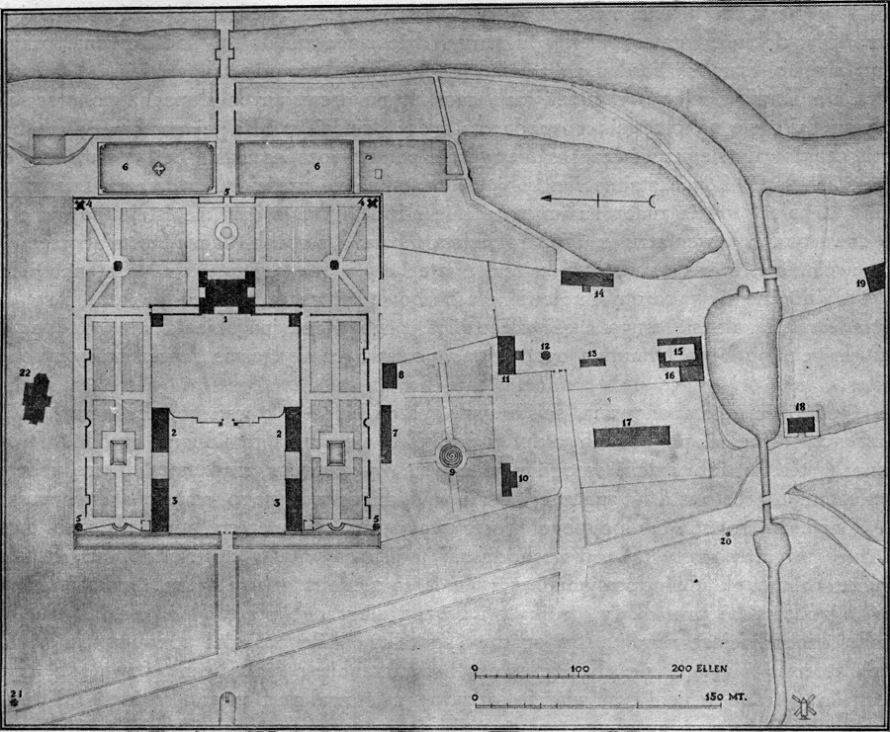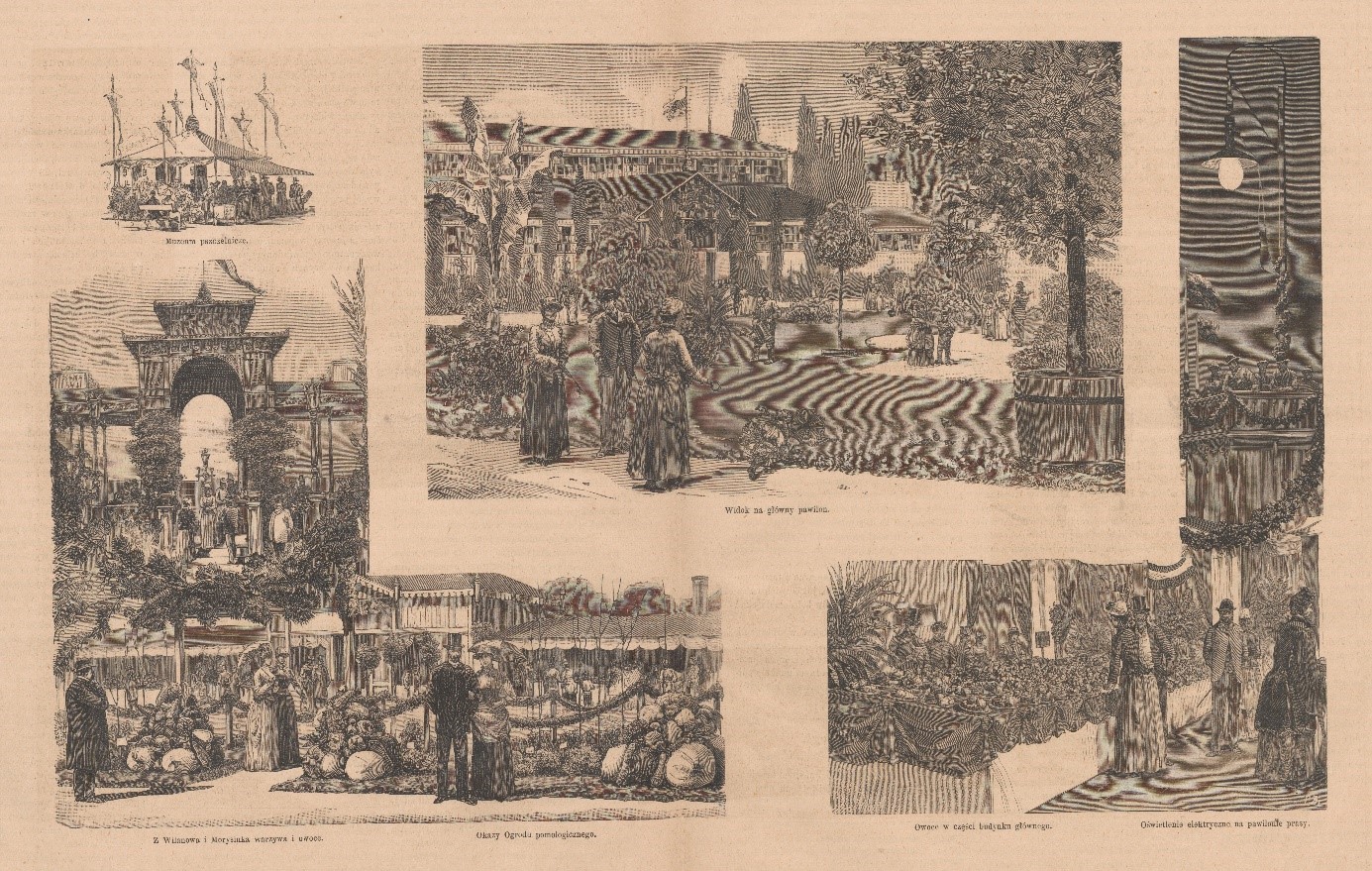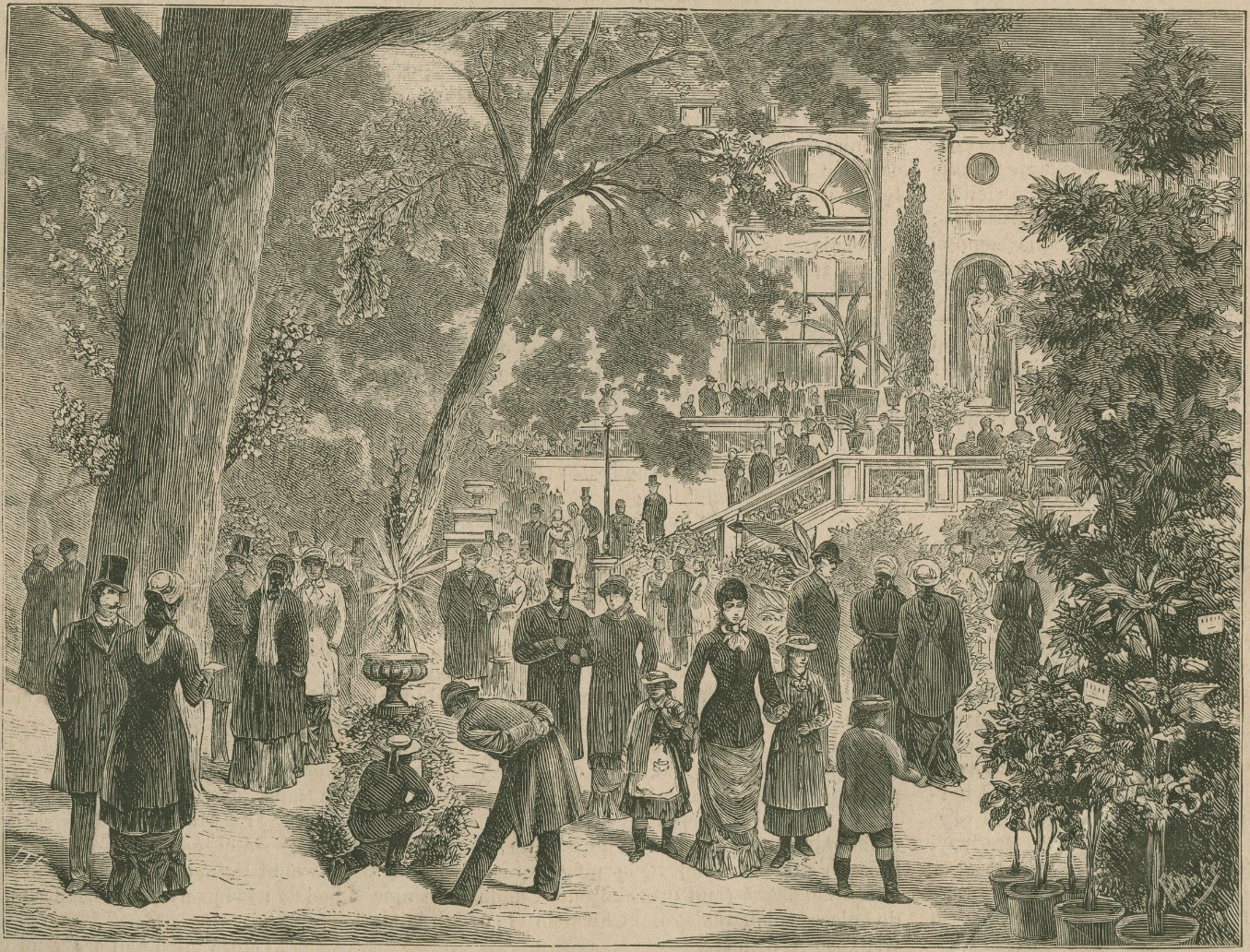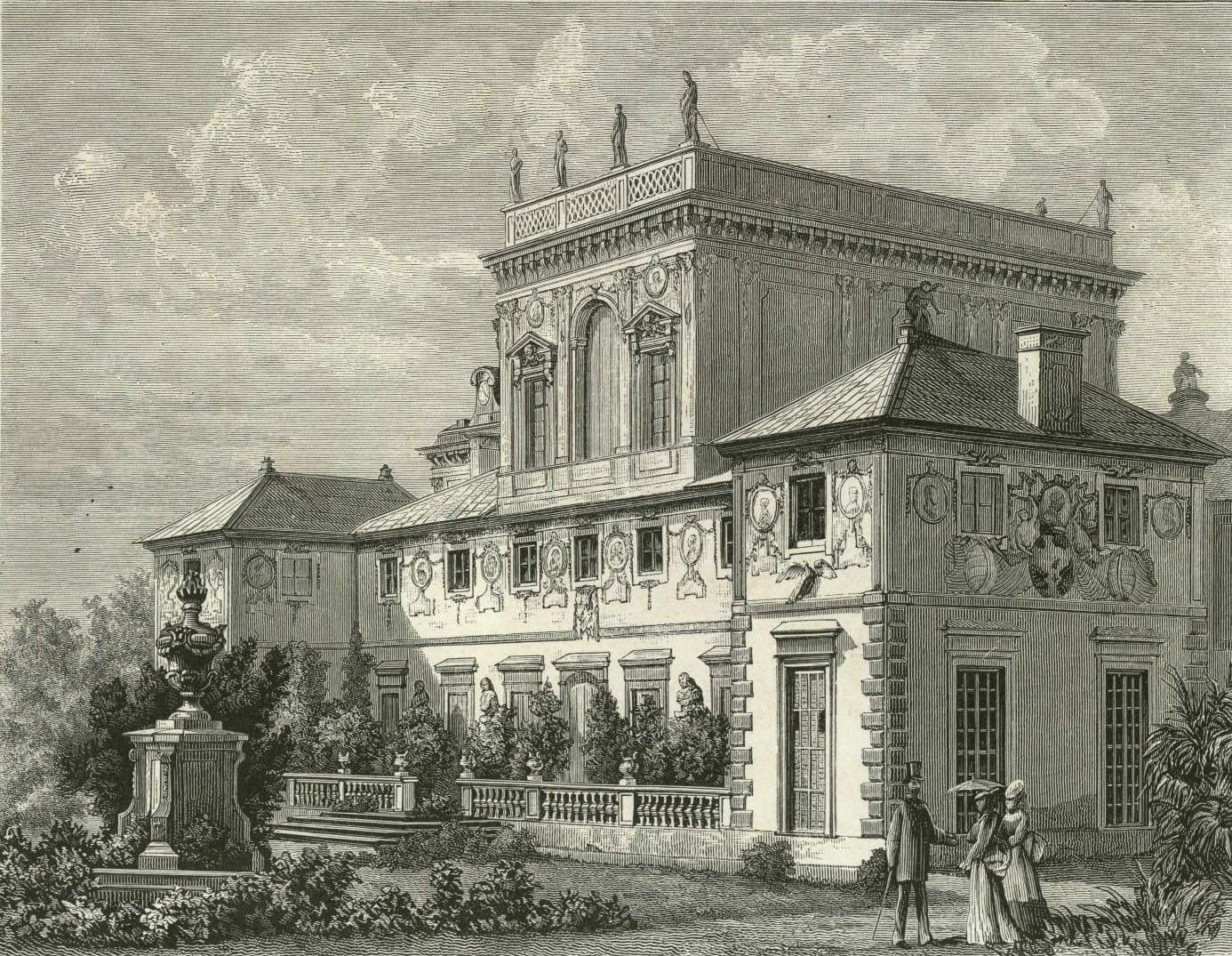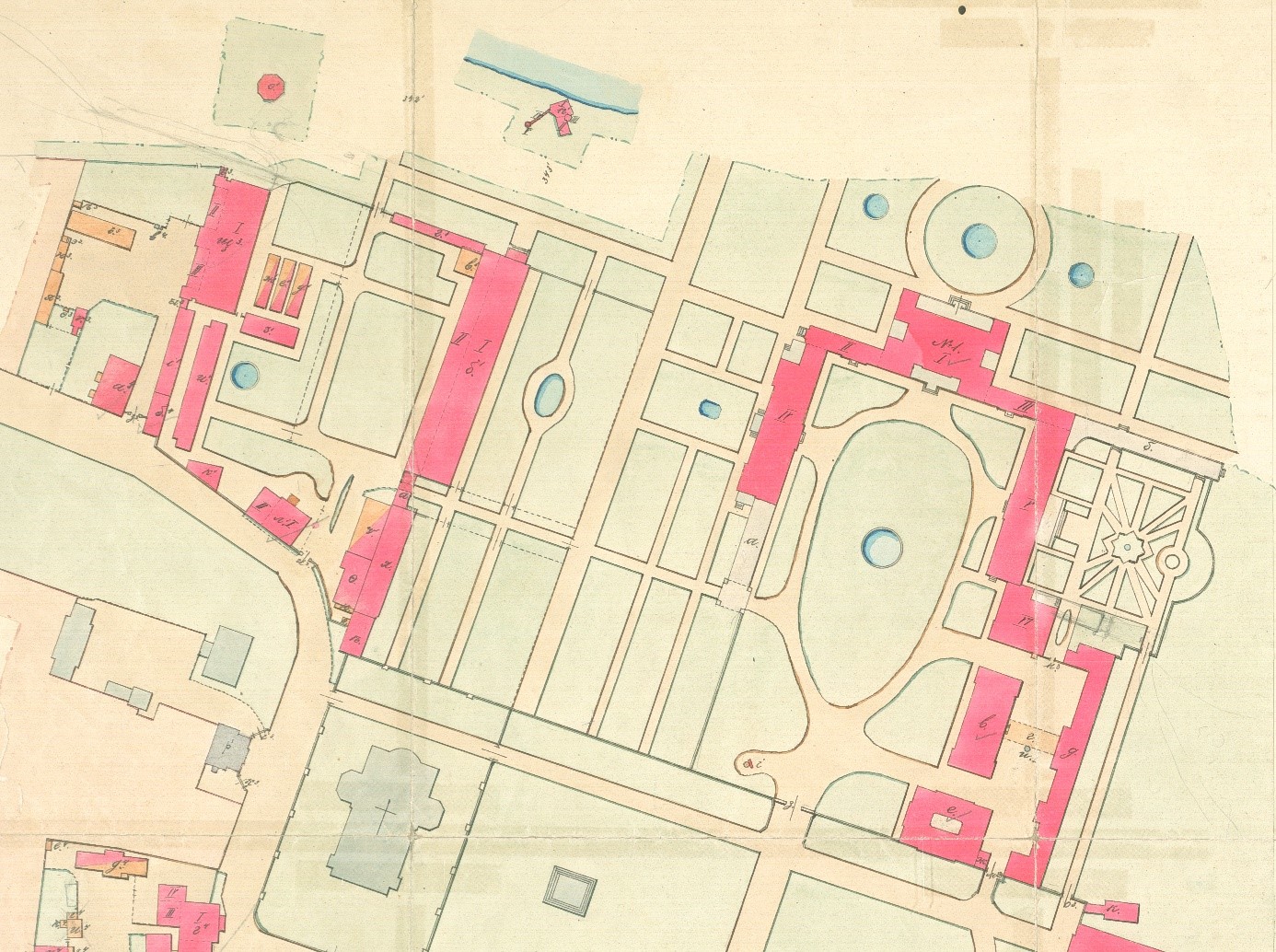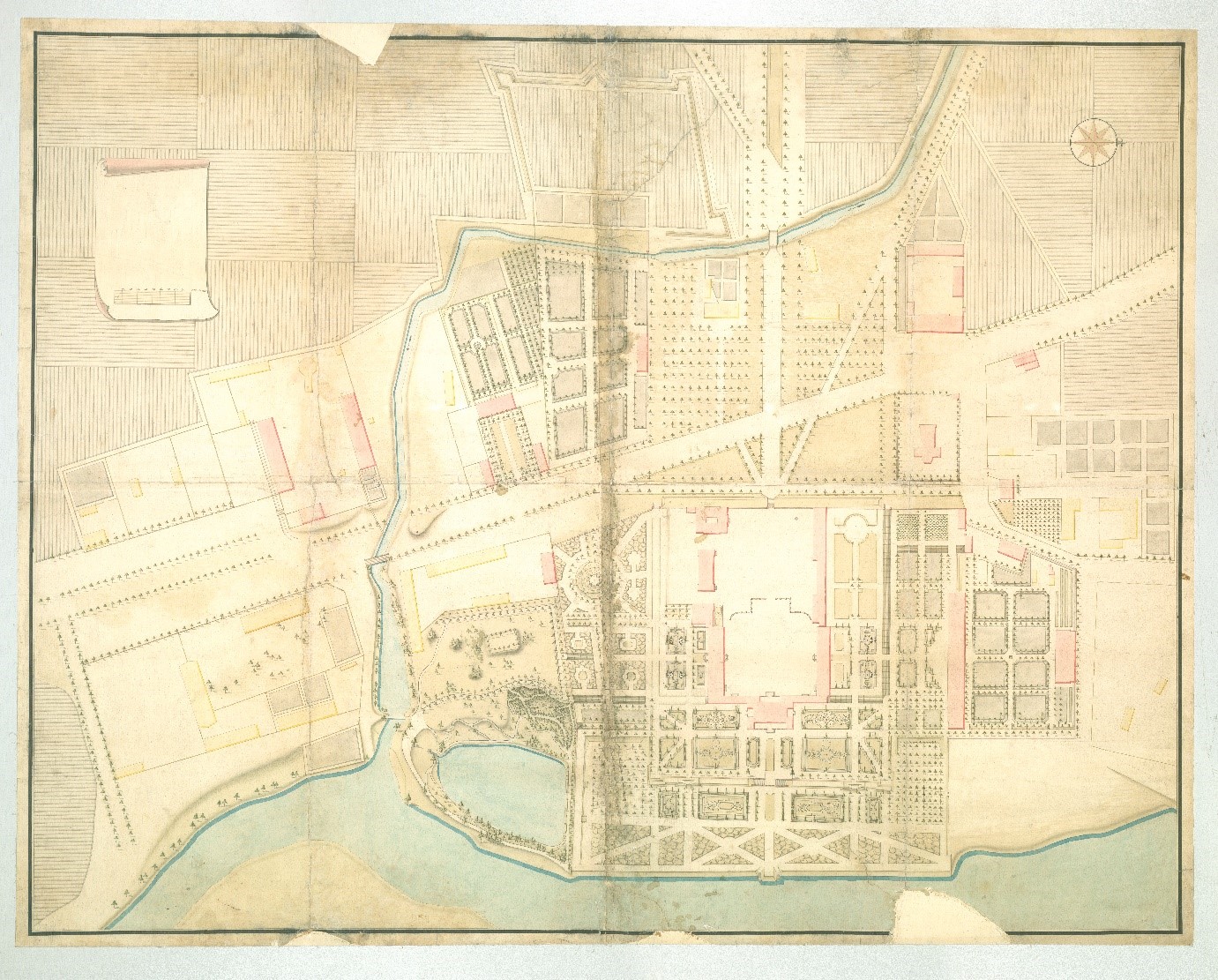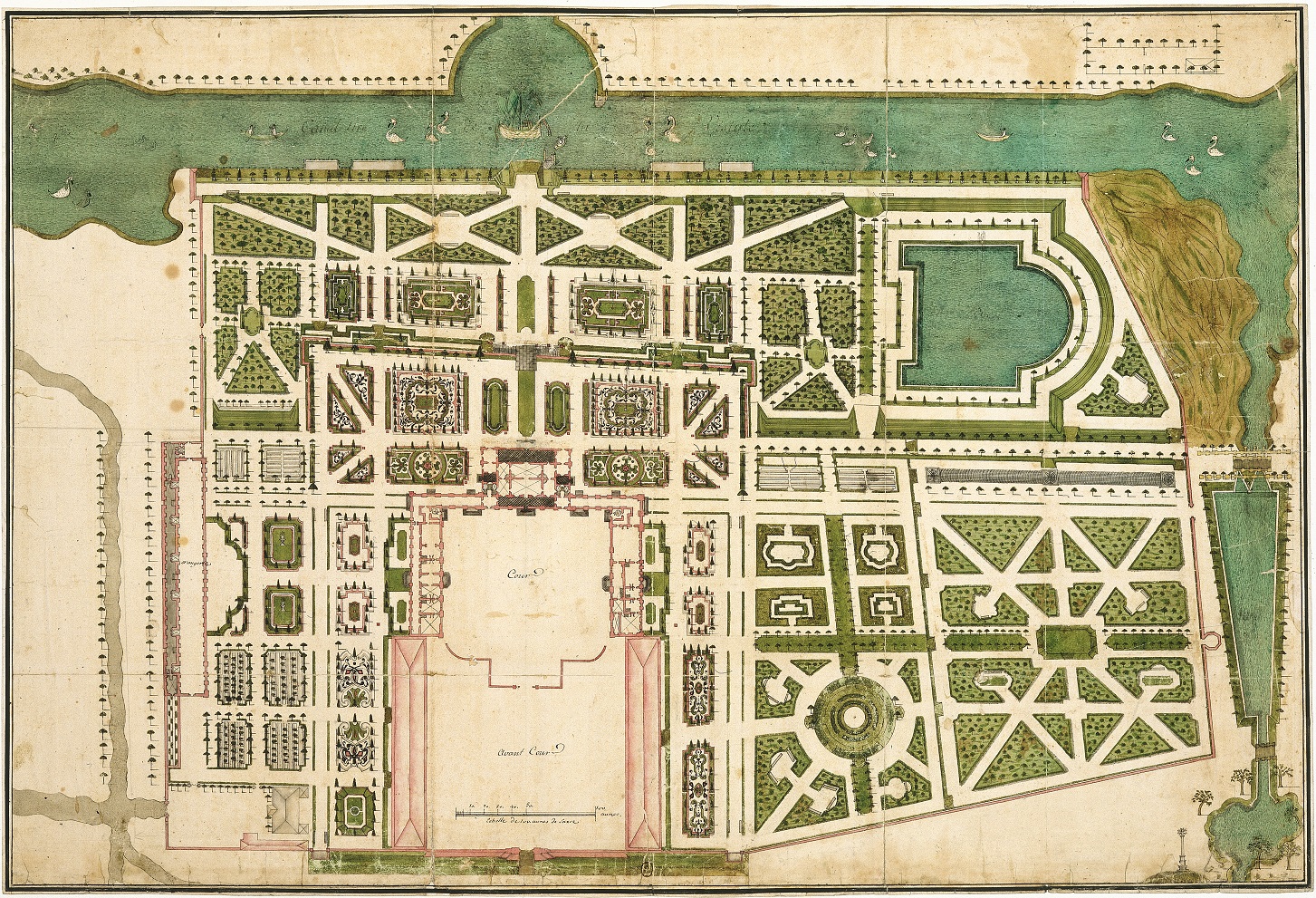Description of the Wilanów garden of bishop Paweł Sapieha from 1694
King Jan III was renowned for his passion for plants and gardens. Numerous historical records and legends attribute him with planting trees at his estates in Jaworów (now Yavoriv, Ukraine) and Wilanów. The King would import or receive seeds and plants from all over Europe, including orange trees from Gdańsk and Florence, jasmines and tulip bulbs from France, seeds from Amsterdam. In his library in the Żółkiew Castle (now Zhovkva, Ukraine) he held many excellent works on botany, including Dendrologiæ natvralis… by the Italian naturalist Ulisse Aldrovandi (1668), Exoticarum aliarumque… by the Gdańsk botanist Jacob Breyne (1678) and Dendrographias sive historiae naturalis… by the Polish-Scottish natural scholar John Jonston (1662). King Jan III’s great horticultural passion also showed in the collection on plants that he had gathered in Wilanów. However, few sources discussing its size or species variety remain today. One of the most detailed is the description made by bishop Paweł Franciszek Sapieha [1] following his visit on Monday 12 July 1694. This document is now one of the more valuable sources for studies on the history of the Wilanów garden during the times of King Jan III.
According to the manuscript, the Italian garden’s section (today the baroque Upper Garden) were planted with the red-flowered tiger lilies (Lilium bulbiferum L.) and roses (Rosa L.). These most likely also included historical rose species, grown in the contemporary Polish-Lithuanian Commonwealth, such as the Provence rose (Rosa × centifolia L.), French rose (Rosa gallica L.), dog rose (Rosa canina L.), white rose of York (Rosa × alba L.), burnet rose (Rosa spinosissima L.), Persian yellow rose (Rosa foetida Herrm.), Damask rose (Rosa × damascena), Bourbon rose (Rosa x borboniana). A horse chestnut (Aesculus hippocastanum L.) also grew in the garden. The space was adorned with exotic plants: Lebanese cedar (Cedrus libani A. Rich), fig tree (Ficus carica L.), almond tree (Prunus dulcis [Mill.] D.A.Webb), white (Morus alba L.) and black mulberries (Morus nigra L.).
In the times of King Jan III, the orangery, which no longer exists today, was located south of the palace and housed citrus trees. These included citrons (Citrus medica L.), lemons (Citrus × limon [L.] Osbeck) and oranges (Citrus L.). The may have also included species known in the contemporary Commonwealth: bitter orange (Citrus × aurantium L.), bergamot orange (Citrus × bergamia [Risso] Risso & Poit.), pomelo (Citrus grandis [L.] Osbeck), myrtle-leaved orange (Citrus × myrtifolia [Ker Gawl.] Raf.) and sweet orange (Citrus × sinensis [L.] Osbeck), mandarine (Citrus × reticulata Blanco), as well as trifoliate orange (Citrus trifoliata L.).
The utility section (modern-day North Garden and Rose Garden), on the other hand, was used to grow fruit trees and shrubs, such as: common pear (Pyrus communis L.), apple (Malus domestica Borkh.), including small-fruited French varieties (Fenouillet Rouge?) and the Russian varieties with transparent flesh (White Astrachan?), sour cherry (Prunus cerasus L.), European plum (Prunus domestica L.) or prune plum (Prunus domestica L. subsp. oeconomica var. pruneliana), common grape vine (Vitis vinifera L.), peach (Prunus persica [L.] Batsch), apricot (Prunus armeniaca L.). Thick-set melons (Cucumis melo L.) and cardoons (Cynara cardunculus L.) grew in the flowerbeds.
[1] Paweł Franciszek Sapieha (born before 23 April 1657, died 1 October 1715, Kodeń) – abbot at Paradyż (since 1694), spiritual secretary of Lithuania (1704–1713), diocesan bishop of Samogitia (1713–1715), elector of King Jan III for the Brest-Litovsk voivodeship (1674).
This text is part of the implementation tasks of the Author’s doctoral thesis Technical, aesthetic and management standards of restoring an exotic plant collection in historic gardens exemplified by the Wilanów residence, conducted in cooperation with Cracow University of Technology and the Museum of King Jan III’s Palace at Wilanów, financed by the Ministry of Education and Science under the 5th edition of the “Implementation doctorate” programme.
Bibliography
- Bonnefond E., Le Jardinier français, Paris 1653.
- Chaillou, l'Abrégé des bons fruits ou Catalogue des pépinières de Vitry-sur-Seine, 1755.
- Janczewski E., Zapiski pomologiczne: wyniki doświadczeń z sadu blinstrubiskiego na Żmujdzi, Kraków 1879, pp. 33–34.
- Kałamajska-Saeed M., Genealogia przez obrazy: barokowa ikonografia rodu Sapiehów na tle staropolskich galerii portretowych, Warszawa 2006, pp. 195–196.
- Katalog książek biblioteki Najjaśniejszego i najpotężniejszego króla Polskiego z Bożej łaski, Jana III, szczęśliwie panującego, spisany w 1689 roku, Kraków–Warszawa 1879.
- Komasara I., Jan III Sobieski – miłośnik ksiąg, Wrocław 1982, pp. 170–174.
- Kuśmierski J., King Jan III’s citrus collection, Passage to knowledge Museum of King Jan III’s Palace at Wilanów, 06.10.2021. https://www.wilanow-palac.pl/king_jan_iii_s_citrus_collection.html
- Merlet J., L' abrégé des bons fruits: avec la maniere de les connoistre…, Paris 1675, p. 146.
- Przyboś A., Krasiński Jan Dobrogost, [w:] Polski Słownik Biograficzny, t. 15, Kozłowska Zofia – Kubacki Stanisław, Wrocław–Warszawa–Kraków 1970, pp. 180–182.
- Quintinie J.-B. de La, Instruction pour les jardins fruitiers et potagers, avec un Traité des orangers, suivy de Quelques réflexions sur l'agriculture, vol. 1, Paris 1690, p. 320.
- Rachuba A., Sapieha Paweł Franciszek, [w:] Polski Słownik Biograficzny, vol. 35/1, no. 144, Sapieha Jan – Sapieha Władysław, Warszawa–Kraków 1994, pp. 148–149.
- Sapiehy Pawła. Rękopis spraw krajowych i domowych z lat 1694-1703, Central Archive of Historical Records, Warsaw Radziwiłł Archive, Unit 2, MS 60, ref. no. 1/354/0/2.2/60, pp. 125–128.
- Sikora D., Hanaka A., Morysiński T., Jankowski A., Ogród wilanowski. Rekonstrukcja układu przestrzennego tarasu górnego z czasów Jana III Sobieskiego i Elżbiety Sieniawskiej, Museum of King Jan III’s Palace at Wilanów, Warszawa 2006, p. 5 [typescript].
- Sikora D., „Wilanowski ogród włoski” – rzecz o użytkowo-ozdobnym charakterze ogrodu Jana III Sobieskiego [„The Italian Wilanów garden” – the utylitarian and ornamental character of the Jan III Sobieski’s garden], "Czasopismo Techniczne. Architektura", 2012, vol. 109, no. 8-A, pp. 83–90.
- Sikora D., Kilka uwag o barokowych parterach i próbach ich odtwarzania [Several remarks on baroque parterres and attempts towards their restoration], "Wzornictwo ogrodowe 2011", ed. J. Rylke, Warszawa 2011, pp. 28–45.
- Sikora D., Mur oporowy w Ogrodzie Wilanowskim, "Monument: studia i materiały Krajowego Ośrodka Badań i Dokumentacji Zabytków", vol. 2, Warszawa 2005, pp. 351–373.
- Sikora D., Rola archeologii ogrodowej w procesie rewaloryzacji ogrodu zabytkowego na przykładzie Ogrodu Wilanowskiego, "Monument: studia i materiały Krajowego Ośrodka Badań i Dokumentacji Zabytków", Warszawa 2004, pp. 175–200.
- Sikora D., Szata roślinna ogrodu wilanowskiego w czasach baroku, "Episteme: Czasopismo Naukowo-Kulturalne", no. 20, vol. 2, 2013, pp. 237–262.
- Skoneczna E., Domańska K., Prezentacja roślin z XVII i XVIII w. stosowanych w ogrodach wilanowskich. Na podstawie inwentarzy wilanowskich i innych źródeł historycznych, Museum of King Jan III’s Palace at Wilanów, Warszawa 2014 [typescript].
- Targosz K., Jan III Sobieski mecenasem nauk i uczonych, Warszawa 2012, pp. 363–374.
